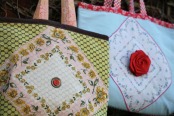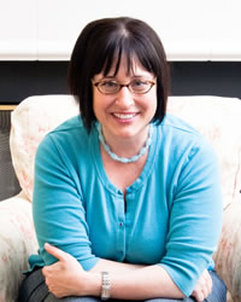
Bari J. is generously offering one of her gorgeous patterns (the winner can choose any one of her patterns, all listed here) and a stack of 8 fat quarters (it will be a random mix), which might look something like this . . .
Q: I’m always fascinated how people come to fabric and pattern design. What is your background, and what made you switch from just making bags to designing fabric and patterns?
Bari J.: Just out of college I worked as a copywriter and graphic designer in advertising. After I had kids and stopped working I started puttering around making jewelry and collage art from found objects, which I sold to local boutiques. Soon thereafter I found sewing and was immediately hooked. Once I had my website up and going I found I was doing a lot of graphic design again and that’s when the idea for surface design, and in particular fabric design, began. It was also pretty clear to me after I started my blog that although people loved my bags and accessory line, my readers were DIYers. I can’t even tell you how many times I was asked for a pattern. The next logical step really was sewing patterns.
Truth told, making the jump to fabric design was not easy. I’d done graphic design and I knew the computer software, but I had no idea where to start. I didn’t know how to make repeats and I didn’t trust my drawing skills. It’s funny because my mother painted my whole life. But having come from a large family, each sibling sort of takes their role and sticks with it. My brother and sister drew and painted a bit, so I was the actress/singer in the family. It’s interesting how family dynamics work. It never even occurred to me that I could draw until I finally tried at 35 years old. In order to design fabric, I had purchased a graphics tablet for the computer. Once I picked up the pen and got going, the ideas kept coming. I can’t even tell you the number of hours I practiced drawing or the number of designs I erased, but eventually I had a collection ... and I’d figured out the elusive pattern repeat.
Right about that time, Spoonflower, started its beta program. So I wrote them and asked to be a part of it. They digitally printed the first collection for me, I made a quilt and other items and off I went to quilt market with several appointments ahead of me with fabric companies. At the time it was still unheard of to have actual fabric samples (now it’s old hat, everyone is digitally printing), so it was a blast to show what you could actually do with the designs I’d done. Everyone wanted to know how I got the fabric printed. Things sure change fast, huh? That was October 2008.
Q: Paris Apartment is your next collection, correct? I love the previews I’ve seen! What inspired this collection, and when (and where) will it be available?
Bari J.: Thank you. I’m thrilled with this collection. It really came about just through doodling and daydreaming. I have always wanted to go to Paris, but I’ve never been. As I was drawing bits and pieces out, I realized it all was part of my elaborate fantasy. This collection is how I imagine I might live if I were to have my own Paris Apartment. It is printed by Lecien and will be available in stores in early July all over the world.
Q: I’m also fascinated with how people arrive at writing a craft book, especially since it’s usually a labor of love. Inspired to Sew is so beautiful. What’s the backstory?
Bari J.: Thank you again. When I arrived home from that very first quilt market, having just sold my first line, Full Bloom, for licensing, I received an email. I was riding pretty high on the success, so in all honesty I was waiting for the sky to fall. You know? That feeling of, it’s all so good, something bad is bound to happen any minute. (Is that just me?)
At any rate, I received an email from the acquisitions editor at C&T that she’d been reading my blog and it turns out I live nearby and would I like to meet for lunch and chat. I was so completely convinced that it was a joke, I nearly deleted the email. I went back to read it a couple days later, and responded, “sure, I’d love to meet and talk about it.” And with a laugh, I forgot all about it. In the end, obviously, I did end up taking that meeting. It turned out C&T was about to launch their Stash Books imprint and it was just the absolute perfect opportunity.
It was, in fact, a labor of love for me. I, again, had no idea how I’d proceed, or if I could even do it, but it all turned out just exactly as I’d imagined, and as an added benefit, it is what propelled me into producing my line of sewing patterns.
Q: I love your tagline: Vintage inspired design for your modern life. What does that mean for you—in both your day-to-day life (what I like to call “the slogging through”) and your creative life?
Bari J.: Throughout my life, I’ve had a love of old things. I think I arrived at it through my mother who also has that aesthetic. However, you just sometimes can’t live with old stuff. In fact, old handbags are most seriously one of those things that are hard to live with in. They can be smelly for starters, something that always bothered me. And for another, they just don’t have modern conveniences. So, the tagline came from the desire to make handbags that were vintage modern. Something with an old-world feel, but with modern conveniences such as added pockets, etc. And that of course easily translates across all of my design whether it be fabric or sewing patterns.
Q: I love your post about the Springtime in Paris clutch, and how many tries it took to get it right. Often times, people don’t see all the work that goes into getting something right (and the mistakes made!). What is your process for developing patterns? Do you see it all in your head, or get your best ideas in the shower, or sketch it out, or just start cutting fabrics, etc.?
Bari J.: I’d say all of the above although I have been know to cut straight into fabrics without a plan which is something I have to force myself not to do.
I do see what I want in my head but sometimes it just doesn’t make sense in reality, so for me, I try to always make a muslin version first after I sketch and work out the measurements, etc. A little restraint in diving right into the real fabrics tends to go a long way for me.
Q: Your work is so rich in color and layers. Does it get tempting to keep adding more, especially when you are working with fabric you love? How do you edit yourself?
Bari J.: Oh boy, I have a terrible time editing. I think it’s just an instinct as to when to stop. I hear my mom saying: “Don’t you think that’s a little bit ‘unga-patchkie’?” Which is Yiddish for over the top or over done.
I do think more is more though. I’ll always say that.
Q: I find that designers are super friendly and the crafting community is a warm one. Still, there is a lot of competition these days as more and more independent designers are producing lines of patterns and fabric. Does it ever feel overwhelming? How do you stay focused?
Bari J.: I’ll tell you what, it IS overwhelming, there IS a lot of competition, but it also is a very warm community and I do think we all try to support one another. There are people who are very giving who have helped me along the way, and I try to give that in return. I do also try to stay out of the blog-o-sphere when I get that overwhelmed “I’m never gonna make it feeling.” And I had a designer say to me once that she just tries to “stay in her lane.” I’ve adopted that attitude.
Q: Lastly, what’s next for you in the short-term and the long-term?
Bari J.: I’ll be working on a new fabric line in the coming weeks for next spring and also a book proposal. And I’ll be teaching at the Sister’s Outdoor Quilt Show’s, Quilter’s Affair next month and then I’ll be in Utah teaching at the Sewing Summit in October.
Long term, I intend to license my designs on other surfaces ... hopefully some home goods and paper. All fun stuff. I really love my job.
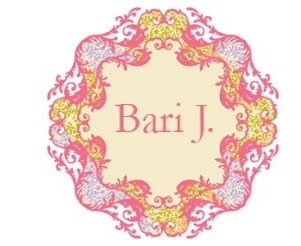
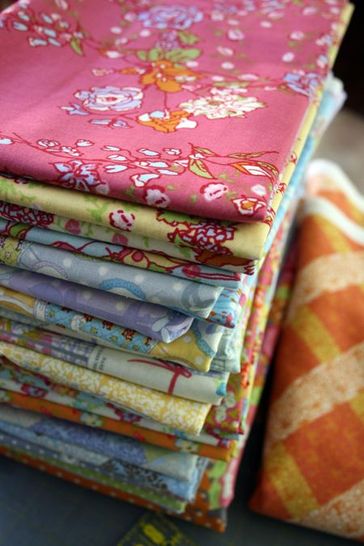
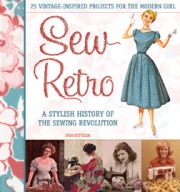

 RSS Feed
RSS Feed